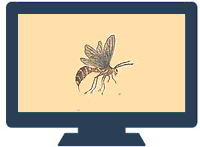Entomology, Department of

Department of Entomology: Distance Master of Science Projects
Date of this Version
2018
Document Type
Project
Citation
University of Nebraska-Lincoln Department of Entomology Online Masters Program Final Project. Lincoln, Nebraska.
Abstract
Seventy-four mosquito surveillance data sets involving over 35 species, from January 2013 to December of 2014 have been obtained with permission from Dr. Carl Boohene and Polk County Mosquito Control District in Central Florida and used as data for this project. These data are utilized to propose a practical, economically-based decision rule model that uniquely integrates human populations with mosquito species populations and budgetary constraints. Two different decision rule conventions are proposed and the choice to go with one of them reflects differing economic expenditure inroads on budgeted chemical and equipment resources. In general, if the threshold is higher, then resource consumption is relatively low; and if lower, then resource consumption is higher. The application of special thresholds, (specifically when mosquito-borne disease infection rates in humans and/or mosquitoes are determined to be higher, or via age grading by ovary dissection and surveys of gravid mosquitoes) are discussed. Aspects of mosquito biology, and surveillance information, as well as the benefits and limitations of proposed action thresholds and other applicable mosquito control information are also discussed. Data sheets in Excel book form, application rates and pesticide are included.
MasterlineKontrol4-4_Calibration_Rev1.xlsx (16 kB)
Polk Co Mosq Data_ptt_workbook_Rev3.xlsx (1162 kB)
Polk Spray Zones.kmz (190 kB)
PolkSprayAcre Data.xlsx (11 kB)


Comments
Copyright 2018 Peter T. Taylor